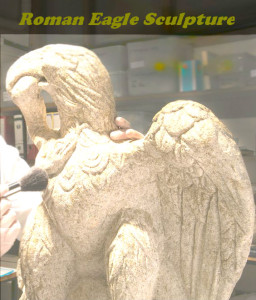Finest Roman-British Eagle Sculpture Found in London
Archaeologists found a 1,800 year old eagle statue in london during excavation of hotel.
The statue was designed in limestone from the Cotswolds and stands two feet tall. The right wing was broken otherwise the statue looks good.
A large stately tombs were also found at the site. Experts have came to the conclusion that the sculpture once adorned the tomb of a Roman-era Londoner, maybe a high-ranking official or a prosperous merchant.
Life in Londinium
During the time of statue’s carving , London was called Londinium. Londinium was a walled city stretching along the Thames River, with a population around 30,000. The mausoleum apparently rise along a road leading out of the city, in a graveyard just outside the city walls. Today the neighborhood is near the Tower of London.
Experts believe that the decorative image of the eagle devouring a serpent represents the triumph of good over evil. In Roman mythology, In Roman mythology, Jupiter’s symbol was the eagle, a chief god of the Roman pantheon.The eagle was thought to bring the soul of a deceased emperor to the heavens, making it an appropriate subject for a tomb ornament.
Historic Artwork
The sculpture is an amazing piece of art—the finest work done by a Roman-British sculpture ever uncovered in London. In its day, wealth and culture would have been a public statement , a sign that even in this distant outpost the deceased was familiar with the customs and beliefs of people in Rome.
The statue’s discovery was made during the final hours of an excavation that lasted several months. The statue was covered with mud when archaeologists took the statue out of the ground.
Preliminary cleaning reported that carving so crisp that the artifact seemed at first to be a garden ornament from the Victorian era.
The Museum of London plans to exhibit this piece for the next six months. Continuing studies should expose new insights into ancient graveyards and tombs, and the life and death of Roman London’s inhabitants.
